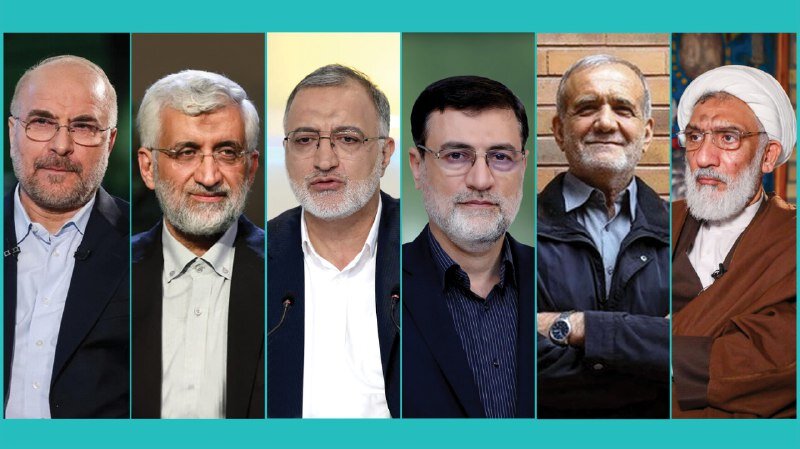Presidential race kicks off

TEHRAN- With the list of “qualified” presidential candidates officially announced, Iran is expected to plunge into a period of heated political debates that will culminate in the election of a new administration later this month.
After a week of intensive deliberations, the Guardian Council, a body charged with vetting election presidential bids, sent the final list of approved candidates to the Ministry of the Interior for public annunciation.
The list included six political heavyweights- Parliament Speaker Mohammad Bagher Qalibaf, Tehran Mayor Alireza Zakani, Representative of the Leader in the Supreme National Security Council Saeed Jalili, Former Justice Minister Mostafa Pourmohammadi, Head of the Foundation of Martyrs and Veterans Affairs Amirhossein Ghazizadeh, and Lawmaker Masoud Pezeshkian.
These candidates are now allowed to officially launch their election campaigns across Iran in preparation for the election day on June 28.
Over the last six days, the whole country has held its breath to see the final presidential lineup after more than 80 politicians appeared at the Interior Ministry to announce their bids. The Guardian Council approved six candidates, rejecting the bids of prominent figures such as Ali Larijani, and Mahmoud Ahmadinejad along with several ministers from the Raisi administration.
The upcoming presidential election is held after the untimely demise of President Ebrahim Raisi and Foreign Minister Hossein Amir Abdollahian along with their security detail and local officials in a tragic helicopter crash in northwest Iran on May 19. According to Iranian law, presidential elections should be promptly held within 50 days in the event of the president’s death or absence.
Shortly before the annunciation of qualified candidates, the social media platforms of Iran were abuzz with speculations about the final contenders, prompting the Constitutional Council to issue a warning about spreading inaccurate allegations in this regard. This election fever highlighted the intensity of electoral anxiety among public opinion.
Soon after the publication of the final list of hopefuls, the Iranian press, and social media platforms were replete with analysis and predictions as to which candidate has the highest chance of becoming president.
While Qalibaf is widely seen as the leading candidate, Dr. Pezeshkian could surprisingly turn into an electoral phenomenon given the total support he enjoys from the reformist faction and his grassroots popularity among Iranian Azeris.
Aside from the expected winner, the list of candidates approved by the Guardian Council offers insights into the Iranian political landscape. To begin with, the list includes representatives from almost all political factions, ushering in a period of fierce competition. Reformists and Moderates will likely throw their full weight behind the only reformist name on the ballot – Dr. Pezeshkian. On the other hand, Conservatives, led by Qalibaf, will do their utmost to mobilize their ever-ready base of support to prevent a Reformist comeback.
This brings us to the second point; the election landscape in Iran is far from being dull and drab. The upcoming election is expected to witness a higher voter turnout compared to most recent elections. According to some estimates, the tragic death of President Raisi and his entourage, coupled with a revived trust in institutional mechanisms for improvement in governance, has prodded Iranians of all hues to consider participation in the upcoming elections.
